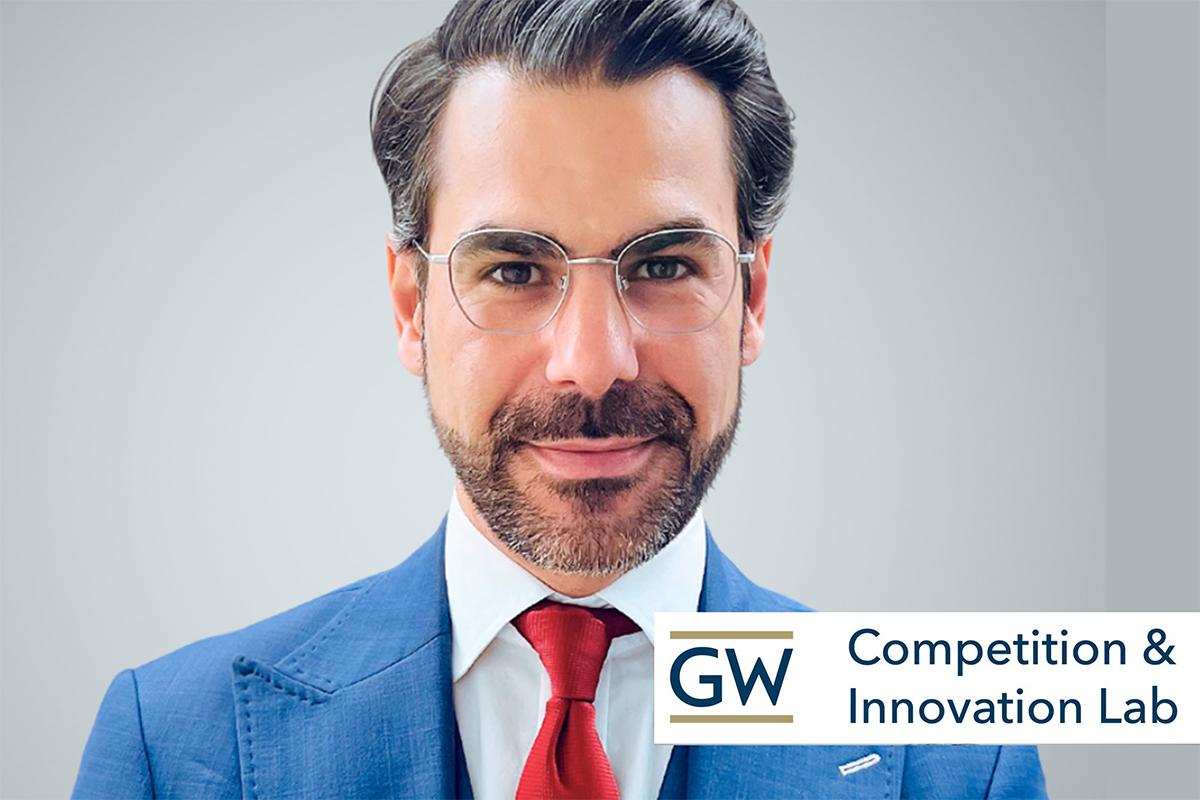For government officials, law practitioners and scholars, “innovation” is a buzzword—something to be pursued, fostered and monetized. But how do we measure innovation? How can a society’s laws, regulations and enforcement actions (or an institution’s) encourage or stifle it? Can it be reinvigorated in cultures that have become stagnant? And can the drive to compete and innovate be harnessed for the public good?
These are a few of the questions on the radar of the George Washington Competition and Innovation Lab (GW CIL), a new university center housed in the George Washington Institute for Public Policy (GWIPP). Founded by Research Professor Aurelien Portuese, GW CIL is a hub for scholars worldwide dedicated to researching consumer behavior, market competition and entrepreneurial innovation.
“At the GW Competition and Innovation Lab, we deliver research that ignites regulatory changes and inspire a new generation of students to shape global markets and foster economic progress,” Portuese said.
On April 25, GW CIL will host its free inaugural conference, “Beyond Dynamic Competition.” Speakers at the daylong symposium, sponsored by NERA and Kirkland & Ellis, include world-leading scholars and enforcers such as Department of Justice Deputy Attorney General of Litigation Hetal J. Doshi, currently spearheading the federal antitrust case against Apple. The event doubles as a launch for a special issue of the American Bar Association’s Antitrust Law Journal, of which Portuese is special editor.
Portuese, whose own background is in antitrust law in the United States and Europe, said interdisciplinary perspectives are necessary to better understand how market dynamics, institutional cultures and human behavior shape and are shaped by one another. Innovation is a slippery concept, qualitative rather than quantitative, defined by no single unit of measurement and liable to be stifled by the same forces that feed it.
“There’s a complex relationship between competition and innovation, which we refer to as the inverted U-curve: A competitive marketplace leads to innovation, but if there are too many firms, the companies can hardly extract innovation profits and they are deterred from innovating,” Portuese explained.
So creating global markets and institutional cultures that are both fair and highly productive will require studying this relationship from all sides, Portuese said, by data scientists, computer scientists and neuroscientists as much as lawyers and economists. All have major roles to play and valuable knowledge to contribute to the general understanding of what makes a strong “innovative” culture in the long term.
If interdisciplinarity is one of GW CIL’s foundational strengths, the other is its global perspective, said Ryan Nassar, the lab’s director of communications. Through ongoing collaboration with the Organization for Economic Cooperation and Development (OECD) and regional partnerships around the world, GW CIL has an on-the-ground view of how innovation functions in different cultural contexts. In Brazil, for instance, a team of researchers led by GW CIL senior fellow Rafael Parisi study the role of the country’s Administrative Council for Economic Defense (CADE) and the evolution of competition there.
That combination of a strong interdisciplinary base and broad geographic scope also makes GW CIL an important resource for policymakers seeking to envision how a proposed legislation will impact their own markets, Portuese said. Right now, for instance, economies worldwide are grappling with how to regulate their digital marketplaces. Many have implemented or are considering implementing nearly-identical variations on the European Union’s landmark Digital Markets Act (DMA) of 2022. But the DMA’s provisions may have unexpected and even unwanted effects out of the European context.
“What excites us is our ability to reach out directly to regulators based on original research,” Portuese said. “Certain assumptions we may have [about innovation and competition] can be challenged from different experiments in different countries, so we emphasize this bottom-up approach and feedback from the ground.”
Faculty, students, and staff are welcome to “Beyond Dynamic Competition.” Learn more here.



